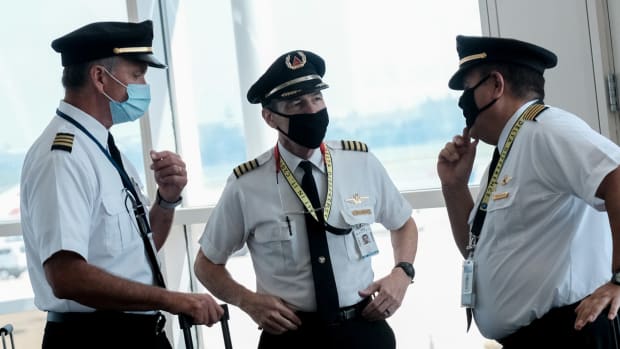
Boeing (BA) got itself a nice Valentine’s Day gift when Air India, Asia's largest commercial carrier, ordered nearly 300 jets in a move that President Joe Biden called an "historic agreement."
The sale, valued at $34 billion, is set to be Boeing’s third-largest sale of all time. Air India is also set to order 250 passenger planes from Boeing’s rival Airbus, which will in total greatly increase its supply of mid-priced flights. Airbus did not disclose terms of the deal.
Air India's purchase will support over 1 million U.S. jobs across 44 states, many of which will not require a college degree, the White House said in a statement.
“This announcement also reflects the strength of the U.S.-India economic partnership,” added President Biden.
Boeing Finally Gets Some Good News
Airlines typically do not pay full list price for commercial jets, but even factoring in a discount due to government subsidies, this sale could be valued at $17 billion, according to some estimates.
The sale is a no-doubt welcome bit of good news for Boeing, which is still struggling to get back to its record highs of 2018 when it made $101 billion in revenue, as the manufacturer has been dealing with massive losses brought on by the pandemic as well as 20-month grounding of its 737 Max following two fatal crashes.

Michael A. McCoy/Getty
As With Most Deals, There's Fine Print
So Boeing got a huge sale, which is great for them and, per the White House, great for workers.
In theory, this is also great news for Air India, the flag carrier of India. But the company seemingly has the same problem that is plaguing many airlines around the world, especially in America.
Namely, it just doesn’t have enough pilots.
As we’ve noted recently, the aviation industry has been struggling to hire enough pilots to replace people who either took a buyout or an early retirement. It’s been estimated that 10,000 pilots have left the field since the pandemic, and there will be a need for 18,000 pilots this decade. But so far, the Federal Aviation Administration has only issued about half that number of pilot licenses in the previous years,
One of the big problems for airlines in America (not to be confused with American Airlines) is that pilots are required to retire when they hit 65, but there’s not enough new pilots available to replace a generation that is quickly aging out of the field. There’s also not enough experienced pilots available to train the new crop.
Air India seemingly has its own set of problems, as last Dec. the Indian Pilots Guild & Pilots’ Association, wrote to the airlines to complain about the shortage of pilots and the challenges they are facing including long work hours, pay cuts and deteriorating work-life balance.
In general, workers have been alleging that Air India has a pilot shortage similar to Delta, Southwest, and others. And, as in America, has led to a record number of cancellations and delays. Once again, workers are pointing their fingers at management.
Two pilot unions, Indian Pilots Guild (IPG) and Indian Commercial Pilots Association (ICPA), say there is a shortage of pilots to operate the airline’s long-haul and ultra-long haul flights, writing in a joint letter to Air India’s Chief Human Resources Officer Suresh Dutt Tripathi on Dec. 13, "…we cannot maintain the printed planned roster due to a shortage of pilots, as CMS (crew management system) does not have standby pilots."
"Though management might refute the charges of crew shortage in public, the reality is there for everyone to see," the letter added.
From Boeing’s perspective, it's not really their problem that Air India has ordered a record number of new planes without having enough pilots to fly them. Then again, it would be helpful to see all those planes functioning properly in the air.
This massive purchase does make it apparent, however, that the aviation industry has a problem with placing the cart before the horse, and if it doesn’t spend enough to attract a new generation of pilots, it may soon see record numbers of brand new airplanes grounded and sitting idle.







